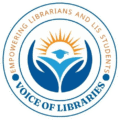RDA, or Resource Description and Access, is a set of guidelines and rules for cataloging library materials, similar to AACR. RDA was developed as a replacement for AACR and it is designed to be more flexible and adaptable to the digital age. RDA is a standard for descriptive cataloging providing instructions and guidelines on how to create bibliographic data to describe resources and make them discoverable.
RDA was developed by the Joint Steering Committee for the Development of RDA (JSC) which is a collaboration between the Library of Congress, the British Library, and the National Library of Canada. RDA was first published in 2010 and it is an ongoing project, with regular updates and revisions.
Some of the key features of RDA include:
- A focus on the user’s perspective and user needs
- The use of standardized elements and properties to describe resources
- The use of controlled vocabularies and authority records
- Guidelines for creating descriptions of digital resources
- Encourages the use of linked data and semantic technologies
- Updated rules for cataloging new types of materials, such as electronic resources, digital materials and other new technologies
RDA is designed to be flexible and adaptable to the changing needs of libraries and to the changes in technology and user needs. With its user-centered approach, RDA aims to make it easier for users to find and access library resources, regardless of format or medium. It is considered to be the most recent and widely adopted cataloguing rules for libraries worldwide.
RDA, or Resource Description and Access, is a set of guidelines and rules for cataloging library materials. It was developed as a replacement for AACR (Anglo-American Cataloguing Rules) to address the changing needs of libraries and the changing landscape of technology and user needs.
- Development: The development of RDA began in the early 2000s, as a collaboration between the Library of Congress (LC), the British Library, and the National Library of Canada. The Joint Steering Committee for the Development of RDA (JSC) was formed to oversee the development of the new standard.
- First publication: RDA was first published in 2010. The initial version of RDA was developed as a flexible set of guidelines that could be adapted to the changing needs of libraries and to the changes in technology and user needs.
- Updates and revisions: Since its first publication, RDA has undergone several updates and revisions to reflect the changing needs of libraries and the changes in technology and user needs.
- International adoption: RDA has been widely adopted by libraries worldwide, particularly in English-speaking countries, it is considered as a modern and flexible cataloging rules.
- Transition from AACR2: Many libraries have begun to transition from AACR2 to RDA, and many cataloging agencies and vendors are now using RDA as their standard for cataloging.
- Linked data: RDA encourages the use of linked data and semantic technologies, which allow libraries to share and connect data in new ways, making it easier for users to find and access resources across different libraries and platforms.
- RDA Toolkit: RDA is available online through the RDA Toolkit, which is a web-based platform that provides access to the full text of RDA, along with additional resources and tools for catalogers.
RDA is considered as a modern and flexible cataloging rules, it was developed to address the changing needs of libraries and the changing landscape of technology and user needs, it’s user-centered approach aims to make it easier for users to find and access library resources, regardless of format or medium.
Here is an example of an RDA entry for a book:
Title: “The Future of Food: How Technology is Changing What We Eat” Author: Jane Smith Publication: New York : Random House, 2020.
Description: xi, 210 pages : illustrations ; 24 cm
Note: Includes bibliographical references (pages 193-205) and index.
ISBN: 978-0-8129-9479-8 (hardcover)
Subjects: Food industry and trade – Technological innovations Food – Technological innovations
RDA entry follows the format of providing the essential information of the resource, the title, the author, and the publication information, and a brief summary of the content such as the number of pages and illustrations and the ISBN. Additionally, it provides the notes and the subjects of the book which are very important for users to know what the book is about and where it can be classified.
It is important to note that this is just one example of an RDA entry, and the format and details included in an RDA entry can vary depending on the type of resource and the specific cataloging rules used.
